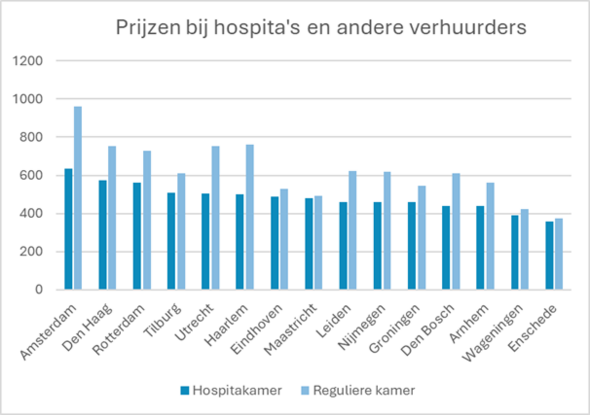The Netherlands is estimated to have 30,000 to 37,000 “hospita’s” (live-in landlords): homeowners who rent out a room in their own home, often sharing communal facilities with the tenant—usually a student.
According to a report of Hospi Housing, one of the country’s largest platforms for this type of rental, rooms in landlord-occupied homes tend to be cheaper than standard student housing. In some cities, like Enschede and Maastricht, the price difference is small. But in cities like Amsterdam, Haarlem, and Utrecht, the gap can exceed 250 euros.
A survey of 4,000 live-in landlords shows that money is often not the main motivation. Fewer than 30 percent cited extra income as their reason for renting. Around 60 percent said they simply didn’t want to leave a room empty—possibly explaining the lower rents.
Earlier studies suggest that 2 to 8 percent of Dutch homeowners are considering renting out a room in this way, potentially adding around 150,000 rooms to the housing market. Landlord-occupied rentals could therefore help ease the shortage of student housing. The Dutch government has also expressed support for this model and is working to remove some legal barriers.
This article was translated using AI-assisted tools and reviewed by an editor.



Discussion